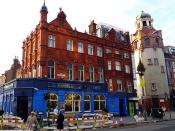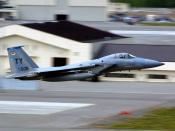September 11, 2001 is a day that will not be soon forgotten. The effects of this tragedy reach every aspect of our lives, from the economy, to foreign policy, to travel, and especially airline safety. Anyone who has traveled can tell you the extent of new security in place at airports. Besides checking traveler's belongings, there are other proposed precautions, such as using biometrics to identify passengers, placing sky marshals on nearly every flight, creating stronger cockpit doors, arming pilots, allowing off duty police to carry weapons on-board, increasing security presence at airports, and giving people other than President Bush the authority to have commercial airlines shot down. There are too many ideas to even list. Improving security both on and off the plane can help prevent another terrorist attack, but certain proposed measures are taking it too far.
Use of biometrics has already begun at a South Carolina airport, where employees there have there retinas scanned to enter certain areas of the site.
This technology is readily available. There are several methods using biometrics that could be put into use in our airports, such as retina scanning, face recognition, and fingerprint scanning. Face recognition technology was tested and found to be 100% accurate in identifying those in a sample of 6,000 people. Using these technologies can make security aware of who exactly is getting on an airplane. If these machines were connected to a database with peoples' basic information including records of previous arrests, outstanding warrants, etc., security officers could make sure people not in the database, such as foreign travelers, did not pose a threat to other passengers. Not only could it help prevent and attack such as 9/11's, but if someone had any warrants out for their arrest they would be caught.
Increased security presence is now...


